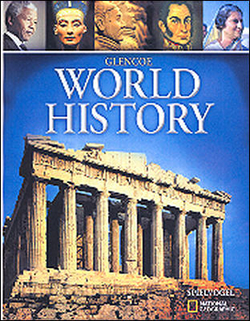Glencoe World History © 2010Chapter 9:
Emerging Europe and the Byzantine EmpireStudent Web Activity Lesson PlansCastles Introduction Castles in medieval Europe were not only for royalty. More often they were occupied by the nobility, who used them to control the surrounding countryside. In this activity students will read about medieval castles in England. Lesson Description
Students will go to a Web site about the history of British castles and read about various facets of castle life. They will answer four questions about castles, and then draw their own castles that include the defensive features described on the Web site. Instructional Objectives
- The learner will be able to explain the strategic importance of castles in medieval life.
- The learner will be able to apply their knowledge of castles to an architectural drawing of their own castle.
Student Web Activity Answers - England's first castles were ordered built by William the Conqueror. Many others were built by later kings and queens.
- Castles were built as a way to defend conquered territory. They were also designed to intimidate local people and to keep them from regaining control of their own lands. Castles served as places of refuge and as residences for the lords who occupied them.
- Most castles were inhabited by loyal subjects of the king or queen. Starting with William the Conqueror, kings and queens gave their loyal knights vast estates and permission to build castles.
- The earls or lords would control their lands, put down local rebellions, and collect rent from local residents to give to the king.
- Students' drawings will vary, but students should include information about round towers, gaps in the parapet, moats, drawbridges, gatehouses, the portcullis, murder holes, and wall slits as part of their castles’ defensive features.
 | 
















